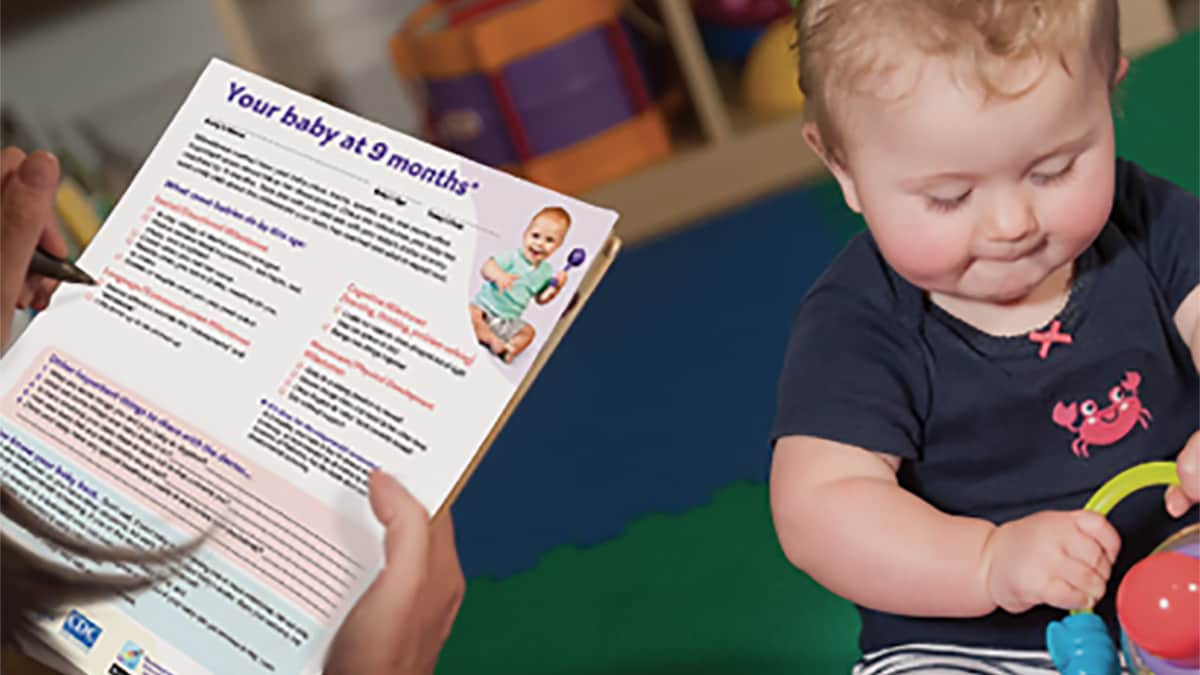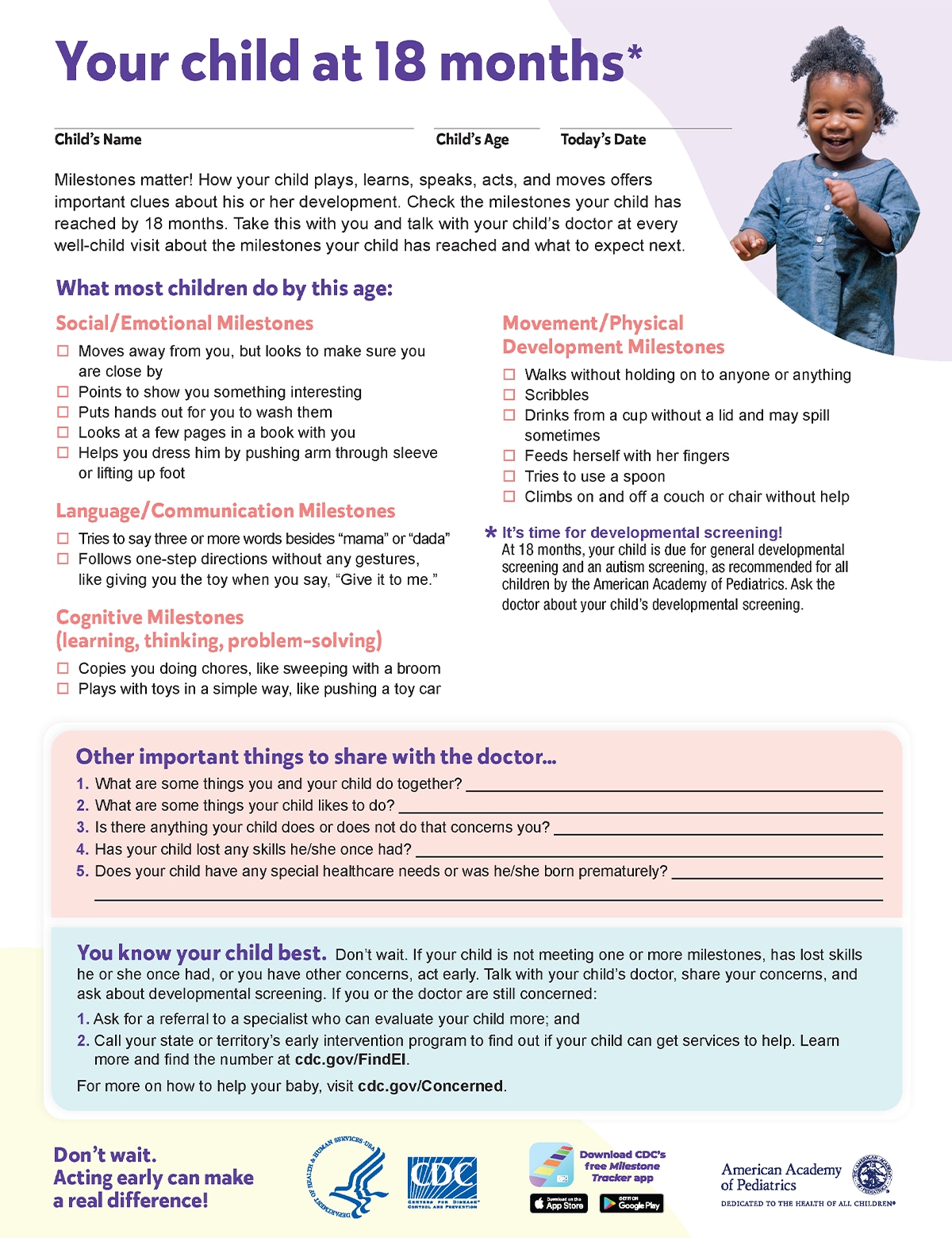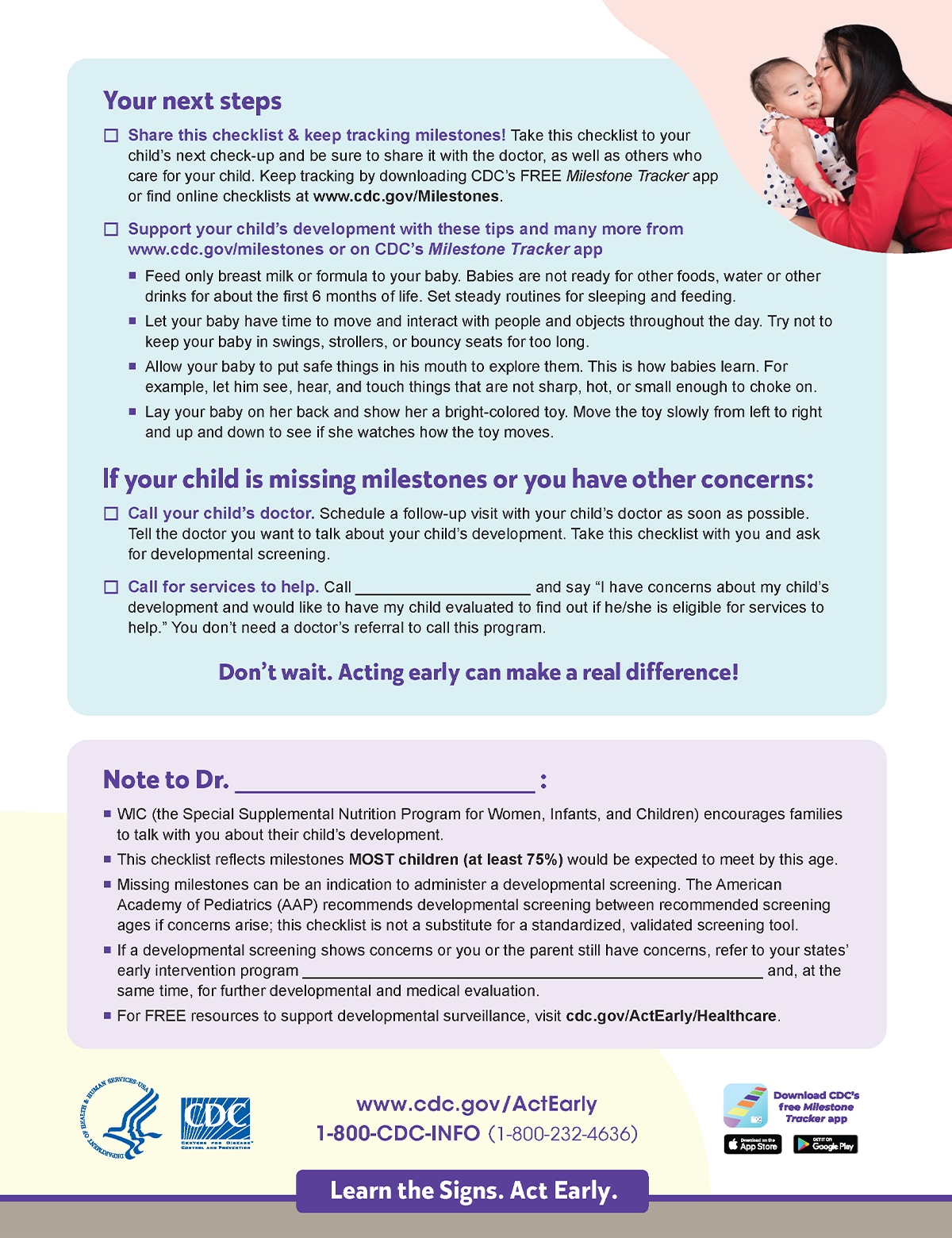At a glance
Milestone checklists are essential to the Milestone Checklist Program for WIC. They can be customized with your logo and contact information. Virtual appointments can use online checklists or CDC's Milestone Tracker app.

Developmental milestone checklists
Age-appropriate milestone checklists are an essential part of the Milestone Checklist Program for WIC. These checklists include the skills that most children develop by that age. They were developed by the Centers for Disease Control and Prevention's Learn the Signs. Act Early. Program, with milestones adapted from the American Academy of Pediatrics' Caring for Your Baby and Young Child and Bright Futures publications. They use parent-friendly language and helpful examples and have been well-received by parents of young children across the country.
The Milestone Checklist Program for WIC requires that families are offered the opportunity to complete a developmental milestone checklist appropriate for the age of their child during WIC certification and mid- certification visits. In addition, checklists may be used any time the family or WIC staff has a concern about a child's development.
Checklists can be printed by the state, agency, or clinic and customized with your logo and contact information, specific referral guidance, and local resources for families. Including local contact information for referrals and services is very helpful to families. Request customizable files from ActEarly@cdc.gov.
Tip: For virtual appointments use CDC's digital online milestone checklists and/or have families complete a checklist within CDC's Milestone Tracker app.
Checklist content
The front of the checklist includes:
- The checklist age at the top
- A space to enter the child's name, age, and the date
- A brief description of developmental milestones
- A list of milestones under the heading "What Most Babies/ Children Do at this Age," organized by categories of development: social/emotional, language/communication, cognitive, and movement/physical development; this section is used to monitor the child's progress and to educate parents about typical abilities at that age
- At the bottom in a pink box under the heading "Other important things to share with the doctor..." are a list of questions related to child development. Encourage parents/ caregivers to answer the questions and share with their child's doctor.
- At the bottom of the checklist in the green box is a recommendation to talk with the doctor if there are any concerns, along with information on requesting a referral and early intervention programming. This area can be customized to include contact information for agencies in your area or state that provide screening, further assessment, and other services for young children.

The back of the checklist includes:
Sections that the state WIC agency can customize to provide families with the best referral guidance and program contact information for their state.
The section entitled "Your Next Steps" includes:
- Next steps for all families to take, including sharing the checklist with the child's doctor and continuing to track milestones between WIC visits
- Steps for families to take if the child is missing any milestones or there are other potential developmental concerns
- Age-specific parenting tips
This section serves as the "referral" and must be customized with appropriate contact information.
A note with helpful background information for the child's doctor (or whomever the family will be referred to for developmental screening) appears near the bottom of the page.
This section can also be customized when the referral is being made to an entity other than the child's doctor.

